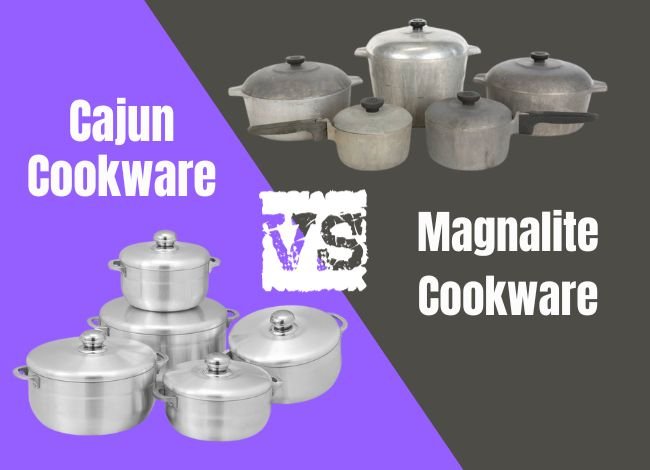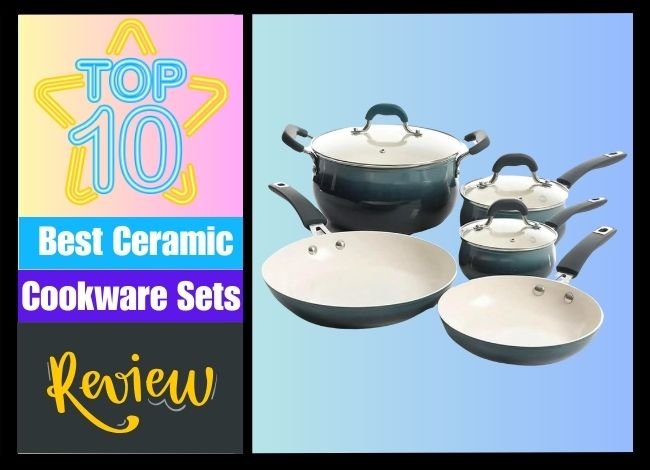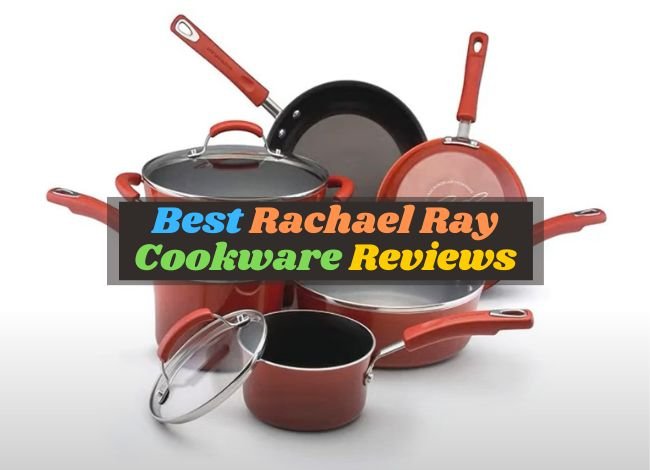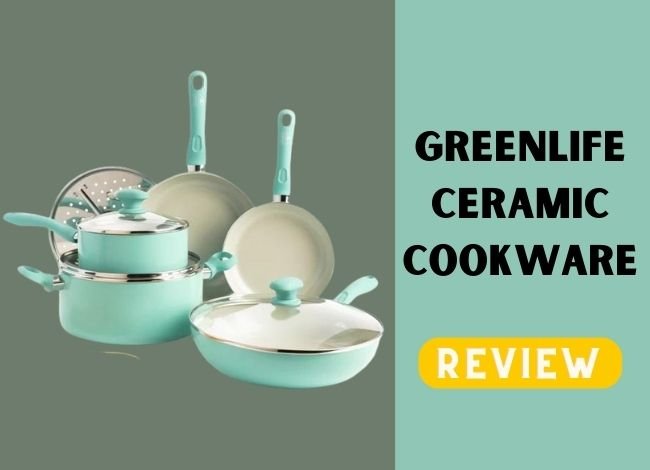Last Updated on January 29, 2024
In the world of culinary arts, the choice of cookware plays a pivotal role in defining the cooking experience and the final outcome of the dish. Among the plethora of options, Cajun and Magnalite cookware stand out for their unique attributes and unparalleled performance in the kitchen. Both boasting of rich histories and distinct features, these cookware lines cater to a wide range of cooking styles and preferences. Cajun cookware, known for its rustic charm and durability, is deeply rooted in Southern cooking traditions. It’s renowned for its ability to retain heat and impart a unique flavor to dishes, making it a favorite among chefs specializing in slow-cooking and flavor-rich cuisines. On the other hand, Magnalite cookware, with its sleek design and aluminum-based construction, offers modern cooking solutions that prioritize even heat distribution and versatility. Ideal for contemporary kitchens, Magnalite appeals to those who seek efficiency and convenience without compromising on quality. In this comparison, we delve into the intricacies of both Cajun and Magnalite cookware, unraveling their pros and cons to help you make an informed decision for your culinary adventures.
Is Cajun The Same As Magnalite?
In exploring the differences between Cajun and Magnalite cookware, it’s essential to clarify that they are not the same. Cajun cookware typically refers to a style of cooking pots and pans used in Cajun cuisine, known for its robust, flavorful dishes originating from the Louisiana region. These utensils are often made of cast iron or aluminum and are designed for slow-cooking, deep-frying, and high-heat methods. On the other hand, Magnalite refers to a specific brand of cookware made from cast aluminum with a unique, thick base that ensures even heat distribution. This cookware is celebrated for its durability and excellent heat conductivity, making it a favorite among many home cooks. While both types of cookware are known for their high-quality materials and performance in the kitchen, their distinct characteristics cater to different cooking styles and preferences.
Comparison Table: Cajun vs Magnalite Cookware
| Feature | Cajun Cookware | Magnalite Cookware |
|---|---|---|
| Material | Usually cast iron | Typically aluminum |
| Heat Conductivity | Good, retains heat well | Excellent, heats up quickly |
| Durability | Very durable, lasts for decades | Durable with proper care |
| Maintenance | Requires seasoning, prone to rust | Easy to clean, less maintenance |
| Cooking Surface | Non-stick if seasoned properly | Non-stick, smooth surface |
| Price Range | Generally Affordable | Varies, often mid-range priced |
| Ideal For | Slow cooking, frying, grilling | Fast cooking, even heat distribution |
| Weight | Heavy | Lighter than cast iron |
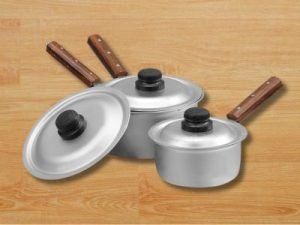 |
 |
Comparison Of The Materials Used In Cajun And Magnalite Cookware
When comparing the materials used in Cajun and Magnalite cookware, distinct differences emerge. Cajun cookware often utilizes traditional materials like cast iron, renowned for its excellent heat retention and natural non-stick properties when seasoned correctly. This makes it ideal for searing and slow-cooking, staples in Cajun cuisine. Meanwhile, Magnalite cookware is made from a unique cast aluminum formulation known for its lightweight properties and exceptional heat conductivity. This material allows for quick heating and even cooking, which is crucial for a variety of cooking methods. The aluminum in Magnalite cookware is also anodized, enhancing its durability and resistance to corrosion. Both materials have their unique advantages, with cast iron being preferred for its longevity and heat retention, and cast aluminum for its lightweight nature and even heat distribution.
Comparison Of The Durability And Performance Of Cajun And Magnalite
Both Cajun and Magnalite cookware have their merits in terms of durability and performance. Cajun cookware, particularly the cast iron variety, is famed for its durability. It can last for generations if maintained properly. Its heavy-duty construction makes it resistant to warping and ideal for high-heat cooking methods. However, it requires regular seasoning to maintain its non-stick properties and prevent rust. Magnalite cookware, known for its anodized cast aluminum construction, offers durability and resistance to wear and tear. It’s lighter than cast iron, making it easier to handle, and its excellent heat distribution leads to consistent cooking results. While it doesn’t require seasoning like cast iron, it’s unsuitable for induction cooktops and may not be as long-lasting as high-quality cast iron.
Comparison Of The Price And Availability Of Cajun And Magnalite
Regarding price and availability, Cajun and Magnalite cookware cater to different market segments. Cajun cookware, especially cast iron pieces, is generally affordable and widely available. Its popularity in Southern cooking and the resurgence of cast iron cooking have made it accessible in various outlets, from specialty stores to online retailers. Magnalite cookware, on the other hand, tends to be more premium-priced due to its specialized aluminum alloy construction and brand reputation. While it might not be as readily available as Cajun cookware, it can be found in well-stocked kitchenware stores and online platforms. For budget-conscious consumers, Cajun cookware offers great value, while Magnalite is an investment in quality and performance for those willing to spend more. Both brands offer excellent options, but the choice ultimately depends on the individual’s cooking needs, preferences, and budget.
Recommended Uses For Cajun And Magnalite
Cajun and Magnalite cookware are both revered in kitchens for distinct reasons. Cajun cookware, typically made of seasoned cast iron, is ideal for slow cooking and even heating. Its heavy-duty construction makes it perfect for searing meats and frying. On the other hand, Magnalite, made from an aluminum alloy, is known for its excellent heat conductivity and lighter weight. Magnalite pots and pans are excellent for simmering and braising. While Cajun cookware excels in outdoor settings like grilling and campfire cooking, Magnalite suits indoor, everyday cooking tasks. Both types offer durability, but their specific characteristics cater to different cooking styles. Cajun is the go-to for robust, hearty dishes, whereas Magnalite serves more delicate, evenly cooked meals well. Understanding these uses will help you choose the right cookware for your culinary needs.
Why Was Magnalite Discontinued?
Magnalite cookware, once a staple in many kitchens, was discontinued for several reasons. Primarily, changes in consumer preferences and the rise of newer, more advanced cookware technologies led to a decline in its popularity. As health concerns over aluminum cookware grew, many consumers shifted towards alternatives like stainless steel and non-stick surfaces, which are perceived as safer and easier to maintain. Additionally, the production cost of Magnalite, made from a unique aluminum alloy, was relatively high, impacting its market competitiveness. Despite its excellent heat distribution and cooking performance, these factors contributed to its gradual phase-out from the market. The discontinuation of Magnalite cookware serves as a reminder of the ever-evolving nature of kitchen trends and consumer preferences in the culinary world.
What Company Took Over Magnalite Pots?
After American Culinary Corporation took over the discontinuation of Magnalite cookware, the brand and production rights. This transition marked a new chapter for Magnalite pots, known for their unique aluminum alloy composition and superior heat conductivity. American Culinary Corporation, recognizing the historical value and loyal customer base of Magnalite, aimed to revive the brand while maintaining its classic features. They focused on modernizing the production process while preserving the cookware’s traditional appeal. This acquisition ensured that Magnalite pots continued to be available to enthusiasts who valued their distinctive cooking qualities. The move by American Culinary Corporation highlights the ongoing interest in classic cookware brands and their relevance in contemporary culinary practices.
Cajun Cookware Vs Magnalite
Comparing Cajun cookware and Magnalite involves examining their distinct features and how they cater to different cooking styles. Cajun cookware, typically made of heavy cast iron, is renowned for its durability and exceptional heat retention. It excels in high-heat cooking, making it perfect for frying, grilling, and searing. The cast iron material also enhances flavor over time, creating a natural non-stick surface ideal for traditional, hearty dishes. On the other hand, Magnalite cookware, known for its lightweight aluminum alloy construction, offers superior heat conductivity. It heats up quickly and distributes heat evenly, making it excellent for precision cooking, simmering, and braising. The smooth surface of Magnalite pots is easy to clean and suits every day kitchen needs. While Cajun cookware is favored for its rustic charm and robust cooking capabilities, Magnalite appeals to those who prioritize ease, speed, and uniform cooking. In summary, Cajun cookware is best for intense flavor and traditional cooking methods, whereas Magnalite is ideal for modern, everyday culinary needs focusing on convenience and cooking. Your choice depends on your cooking style and the types of dishes you frequently prepare.
Which Is The Better Choice, Cajun Or Magnalite?
Deciding between Cajun and Magnalite cookware depends on your cooking preferences and needs. If you are a fan of traditional cooking methods and prefer robust flavors, Cajun cookware is your go-to. Its cast-iron composition is ideal for high-heat cooking methods, making it perfect for searing meats and frying. It also retains heat well, allowing for consistent cooking. In contrast, Magnalite cookware is known for its quick and even heat distribution due to its aluminum alloy material. It’s lightweight, easy to handle, and perfect for everyday cooking, especially for dishes that require precise temperature control. Magnalite is also easier to clean and maintain. Ultimately, if you seek durability and intense heat for bold flavors, Cajun is the better choice. If you prefer convenience, even cooking, and a modern approach, Magnalite is the way to go.
Conclusion
In conclusion, choosing between Cajun and Magnalite cookware involves personal cooking styles and kitchen needs. With its robust build and heat-retaining properties, Cajun cookware is perfect for those who revel in traditional cooking methods and flavor-focused dishes. It’s a testament to time-honored culinary practices, bringing a touch of Southern authenticity to your kitchen. Meanwhile, Magnalite cookware stands as a symbol of modern kitchen efficiency, offering quick and even heating, and a versatile range suitable for various cooking techniques. Its lightweight and user-friendly design makes it a go-to choice for contemporary cooks who value convenience and time-saving features. Whether you lean towards the rustic appeal of Cajun cookware or the sleek functionality of Magnalite, each brings its unique flair and performance to the table. By understanding the distinctive qualities of each, you can enhance your cooking experience and elevate your culinary creations to new heights.
Frequently Asked Questions
- What is Cajun Cookware?
- Cajun Cookware refers to cast iron cookware that’s often used in Cajun cuisine. It’s known for its durability and excellent heat retention, making it ideal for slow cooking and frying.
- What is Magnalite Cookware?
- Magnalite Cookware is a line of cast aluminum pots and pans. It’s known for its quick and even heating, lightweight design, and a smooth, non-porous surface.
- How does the cooking performance of Cajun and Magnalite cookware differ?
- Cast iron Cajun cookware is superior for searing and slow-cooking due to its heat retention. Magnalite cookware heats up quickly and cooks evenly, making it better for sautéing and boiling.
- Can Cajun and Magnalite cookware be used on any stove type?
- Both can be used on various stove types including gas, electric, and induction. However, Magnalite cookware often requires a diffuser for even heat distribution on certain stoves.
- Are there any special maintenance requirements for Cajun and Magnalite cookware?
- Cajun cast iron cookware requires regular seasoning to maintain its non-stick surface. Magnalite cookware, on the other hand, is low-maintenance but should not be cleaned with harsh abrasives.
- Is there a difference in the durability of Cajun vs Magnalite cookware?
- Cajun cast iron is extremely durable and can last generations if properly cared for. Magnalite is also durable but can be more prone to warping under extreme temperature changes.
- How does the price compare between Cajun and Magnalite cookware?
- Cajun cookware is generally more affordable than Magnalite. However, prices can vary based on the brand and specific product lines.
- Can I use metal utensils with Cajun and Magnalite cookware?
- Metal utensils can be used with Cajun cookware but should be used cautiously with Magnalite to avoid scratching the surface.
- Are Cajun and Magnalite cookware oven-safe?
- Cajun cookware is typically oven-safe. Magnalite cookware is also oven-safe, but it’s important to check the manufacturer’s guidelines for maximum safe oven temperatures.
- How does the weight of Cajun cookware compare to Magnalite?
- Cajun cookware, made of cast iron, is significantly heavier than Magnalite’s cast aluminum construction.
- Can Cajun or Magnalite cookware be used for acidic foods?
- Cajun cookware can react with acidic foods if not well-seasoned. Magnalite cookware, being non-reactive, is more suitable for cooking acidic ingredients.
- What types of dishes are best cooked in Cajun vs Magnalite cookware?
- Cajun cookware is ideal for slow-cooked, hearty dishes like stews and fried foods. Magnalite is better for quicker cooking methods, such as boiling, braising, and roasting.

